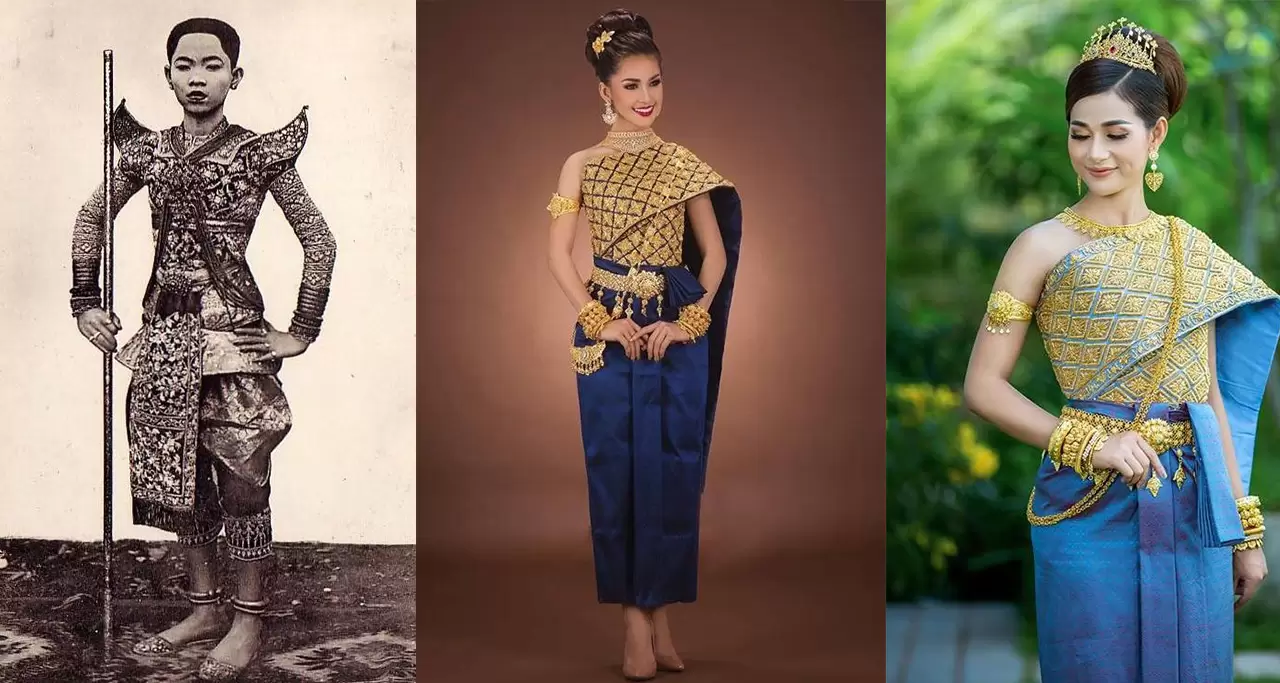
Cambodian traditional dress is not just clothing — it’s a vibrant thread woven through centuries of culture, identity, and resilience. While modern styles exist, traditional Khmer attire continues to shine, especially during festive celebrations and cultural performances. For those traveling on a Cambodia tour, witnessing these garments firsthand adds a deeper, more personal connection to the country’s rich heritage.
🎎 Timeless Beauty in Every Stitch
Traditional Cambodian costumes have evolved from early Indian influences before the Khmer Empire into uniquely Khmer styles — colorful, symbolic, and deeply tied to daily life and ceremony. A reputable Cambodia travel agency will make sure you get a chance to see them up close, whether during a countryside festival or an evening of classical dance in the city.
Let’s explore the most iconic pieces of Khmer attire:
👘 The Sampot — Cambodia’s National Garment
Worn by both men and women, the sampot is Cambodia’s version of the sarong. A long rectangular piece of fabric sewn into a tube, it’s wrapped around the waist and often held in place with a knot or belt. It comes in a range of fabrics, from cotton for daily use to silk brocade for formal occasions — often reflecting social status through material and pattern.
🧣 The Krama — Symbol of the Cambodian Spirit
Perhaps the most recognizable garment in Cambodia is the krama — a checked scarf that serves countless functions: headwrap, baby sling, sweat cloth, belt, or even hammock rope! Beyond its practicality, the krama is a cultural emblem, setting Cambodians apart from their Southeast Asian neighbors.
👒 The Chang Pong & Av Bumpong
Dating back to the 13th century, Chang Pong was once a common chest cover for women, leaving the stomach bare. Over time, it gave rise to more modest forms like Av Bumpong, a draped skirt from the neck down, and Av Bupok, a shirt-like garment resembling a dress.
👚 Clothing that Reflects Status
Wealthier Cambodian women traditionally wear a more refined blouse called Av Dai Puon, often paired with elegant skirts and sashes. The Av Pak, a modern blouse hand-painted and embroidered with silk, bridges traditional and contemporary fashion.
🎨 Colors for the Days of the Week
In Cambodia, color holds meaning. Traditionally, each day of the week is associated with a color, and it’s not uncommon to see people wearing:
- Monday: Dark Yellow
- Tuesday: Purple
- Wednesday: Green
- Thursday: Light Green
- Friday: Dark Blue
- Saturday: Dark Red
- Sunday: Bright Red
It’s a beautiful way to add rhythm and spirit to daily dress!
🧵 Silk Weaving – A Proud Revival
Silk weaving is an age-old art in Cambodia, now enjoying a comeback thanks to tourism. Many families raise silkworms and harvest silk at home, with intricate techniques passed down through generations. While raw silk often comes from Vietnam or China today, the craftsmanship remains proudly Khmer.
Visitors on a Cambodia family tour or Indochina tour can often stop at traditional weaving villages, watch the process, and purchase handmade textiles — a meaningful souvenir that supports local artisans.
🌾 Functional Fashion in Rural Life
In the countryside, traditional clothing isn’t just ceremonial — it’s practical. Conical bamboo hats shield farmers from the sun, while loose-fitting sampots allow comfort and mobility. And during festivals, these same villagers transform, donning their brightest attire, dancing and celebrating with joyful pride.
If you’re planning a trip to Cambodia, don’t just look at the sights — look at the people. Their clothing tells stories of survival, celebration, and deep cultural pride. Let your journey include time to feel the fabric of Cambodia’s living traditions — you’ll come away with more than photos, but a deeper appreciation for this beautiful nation.



